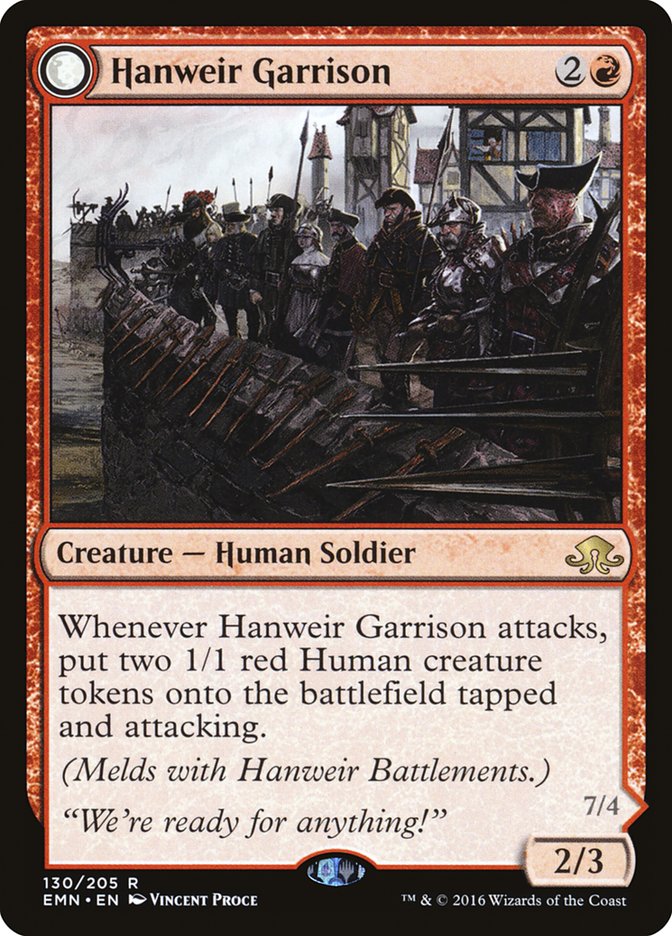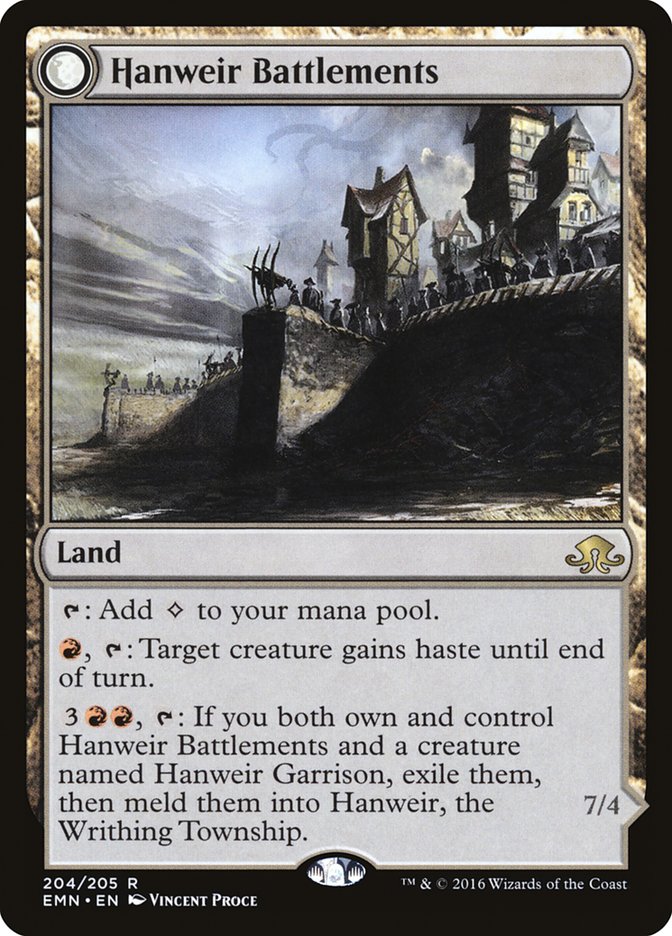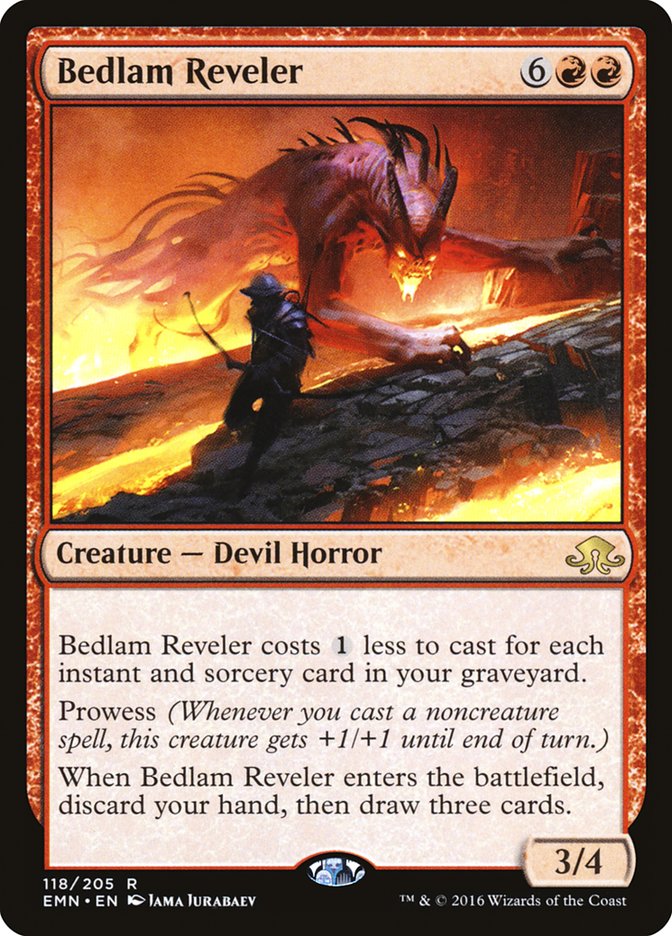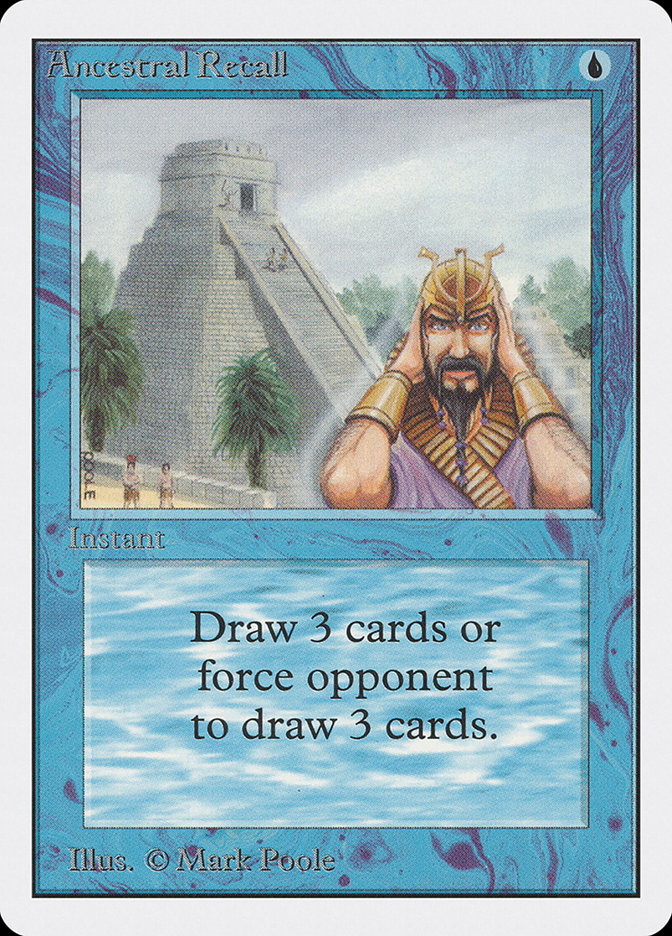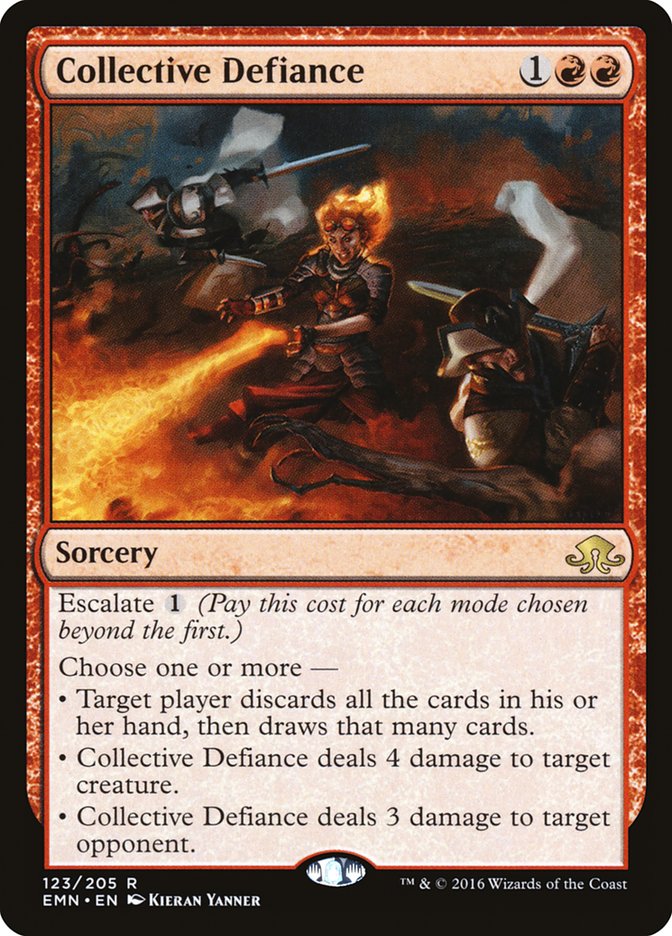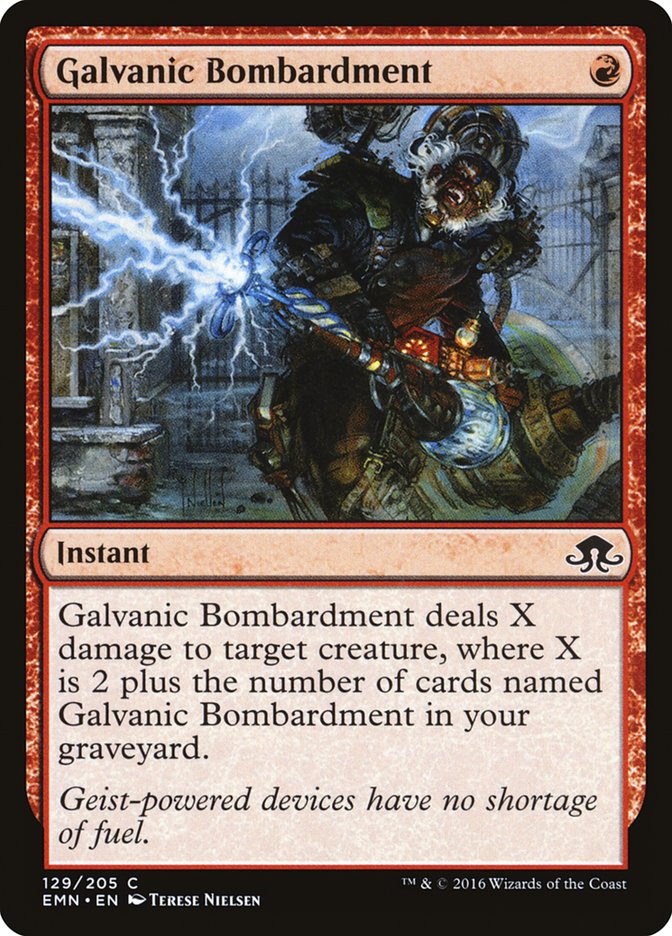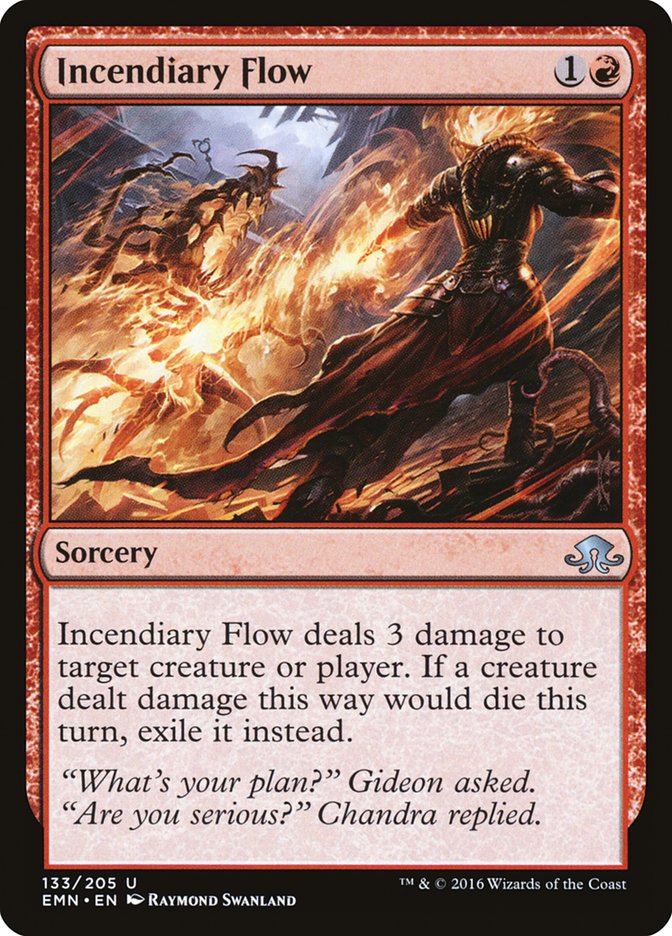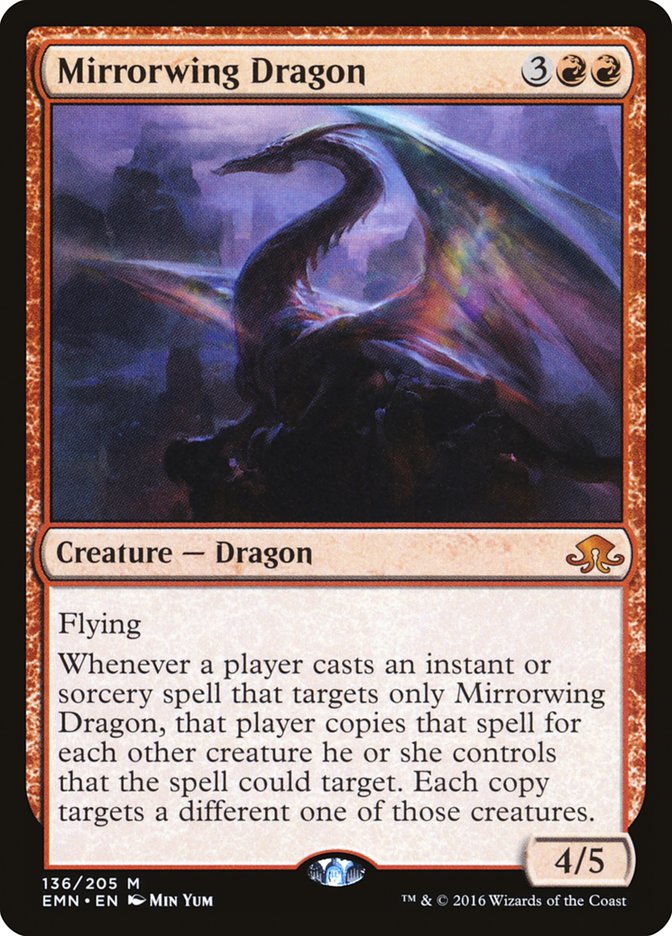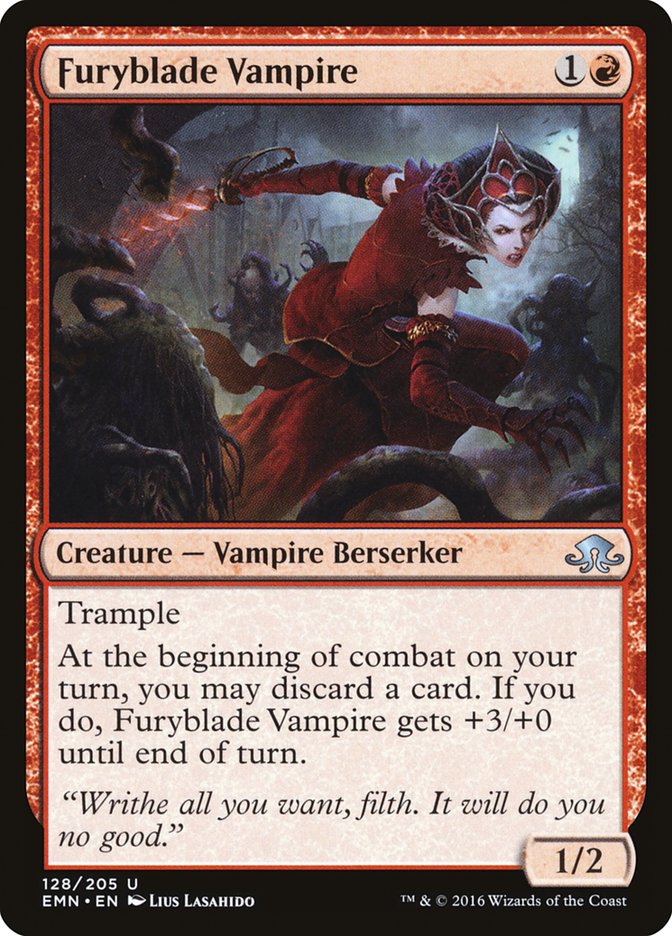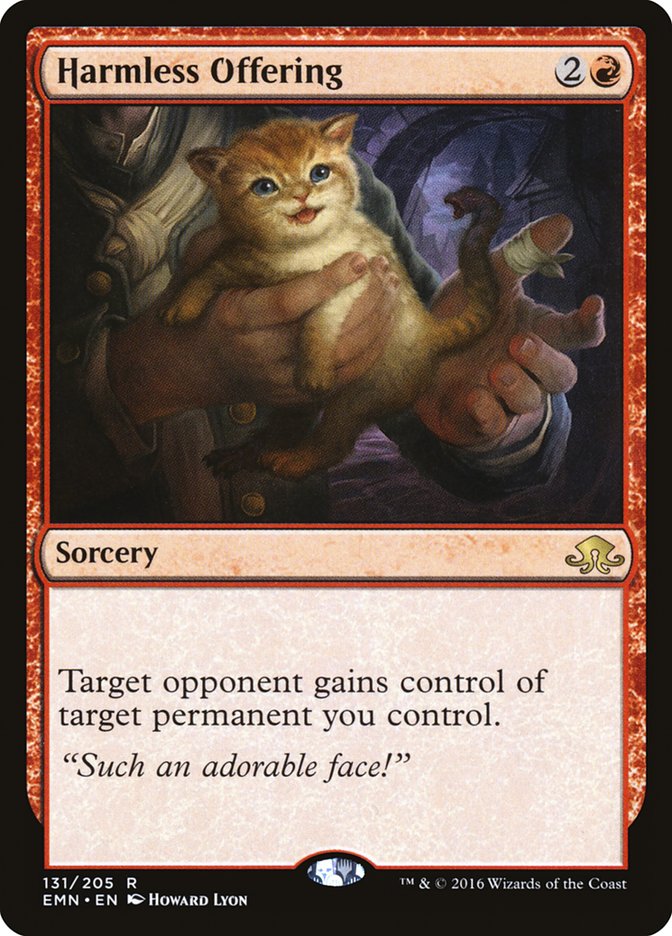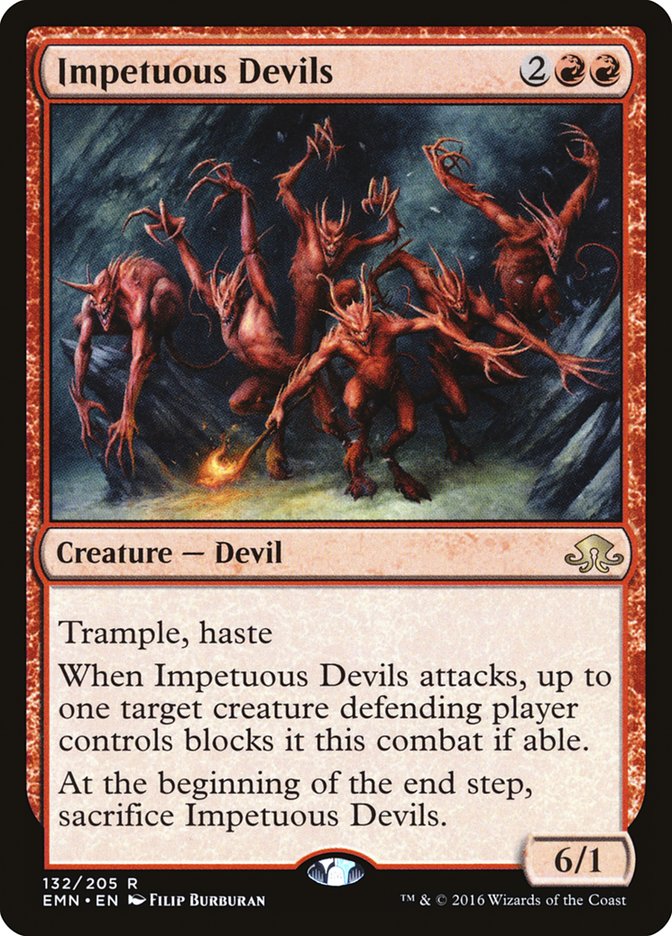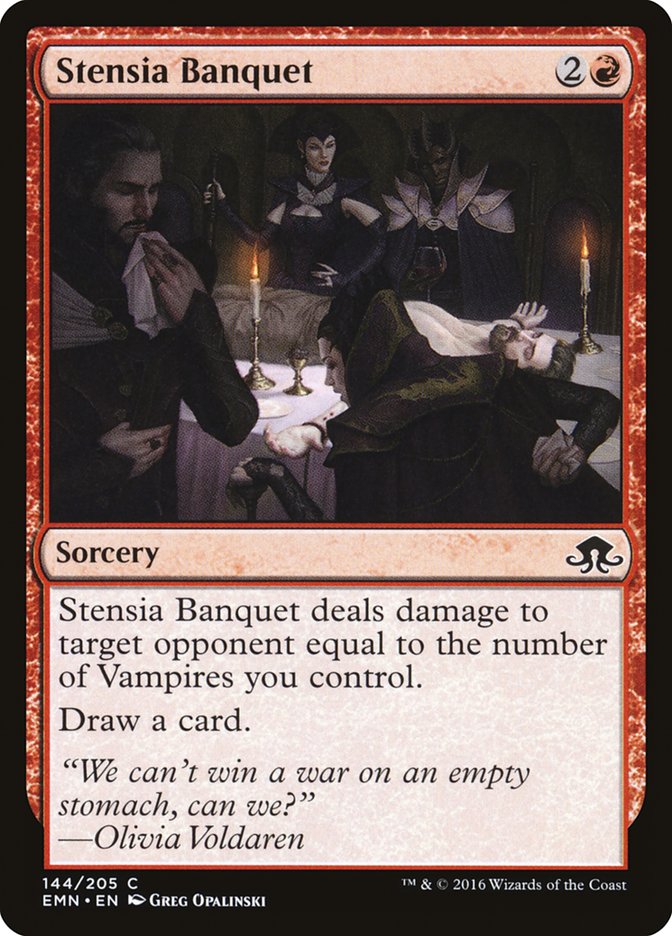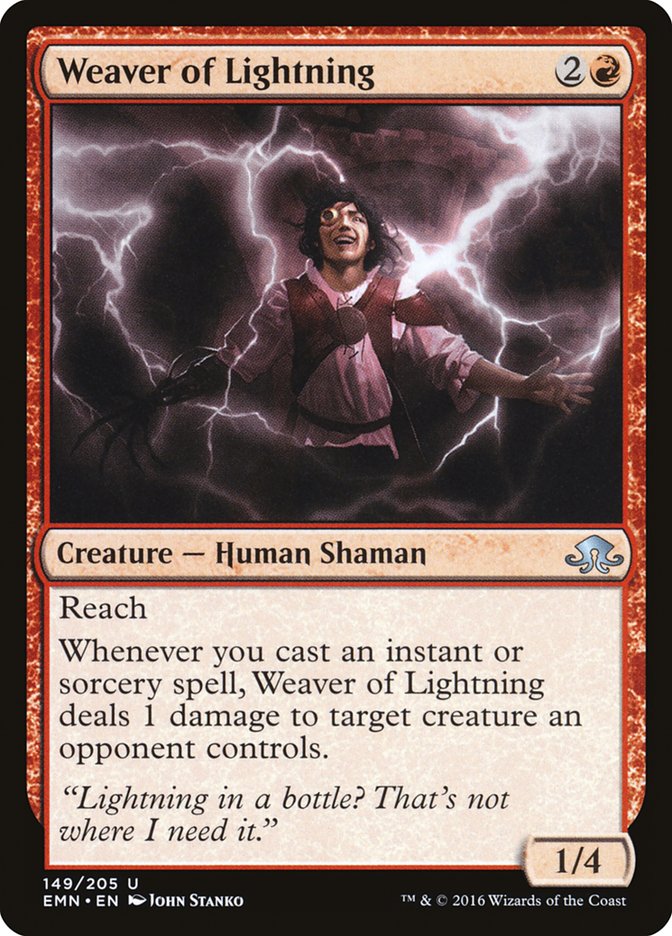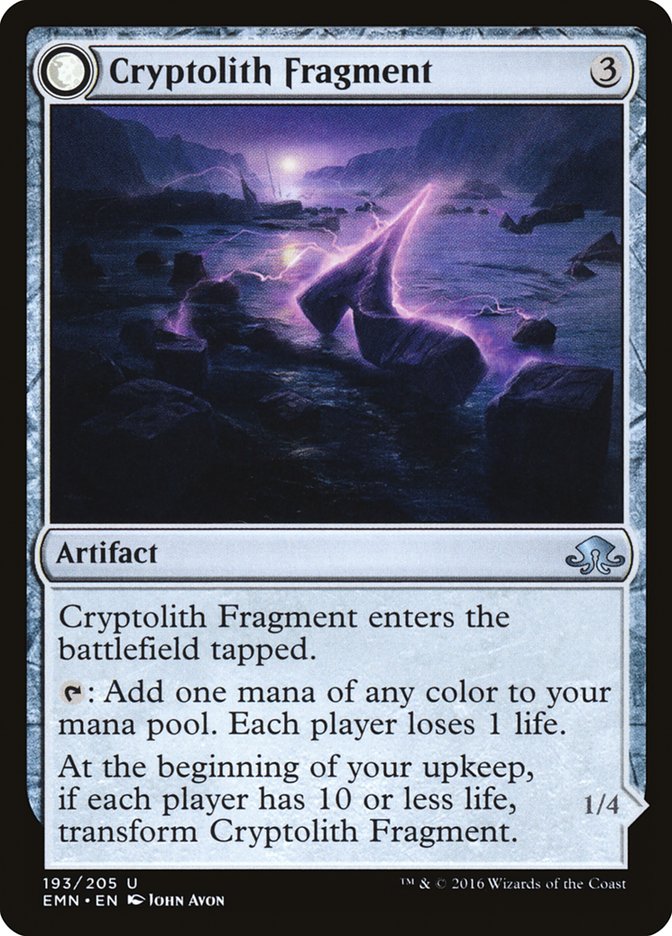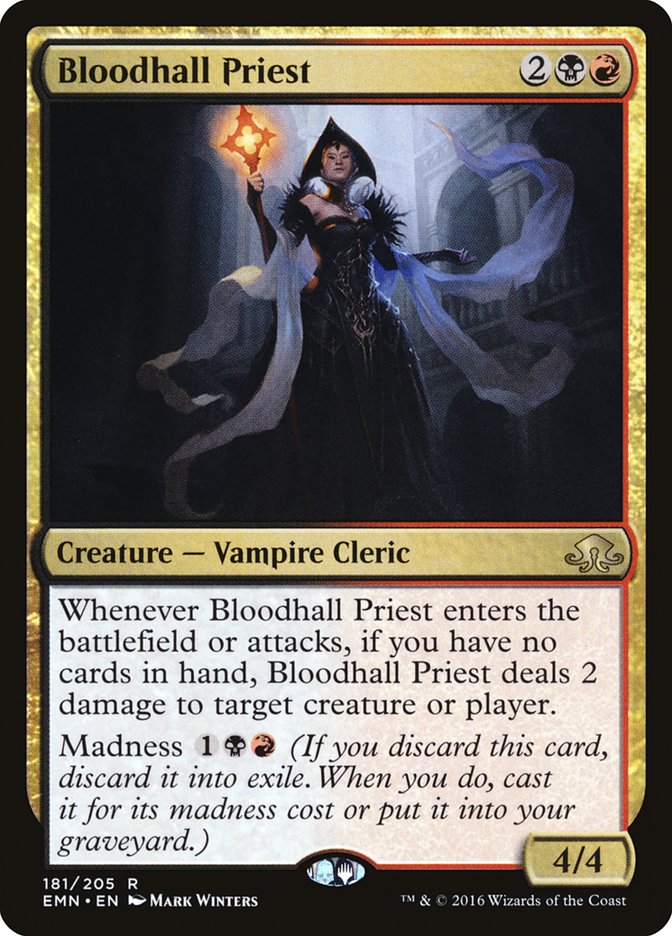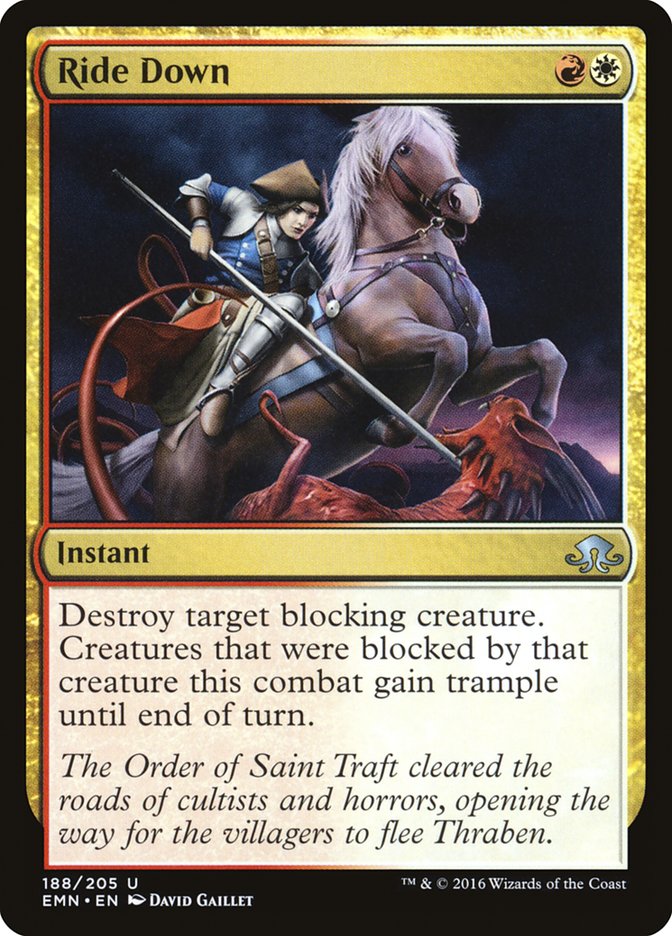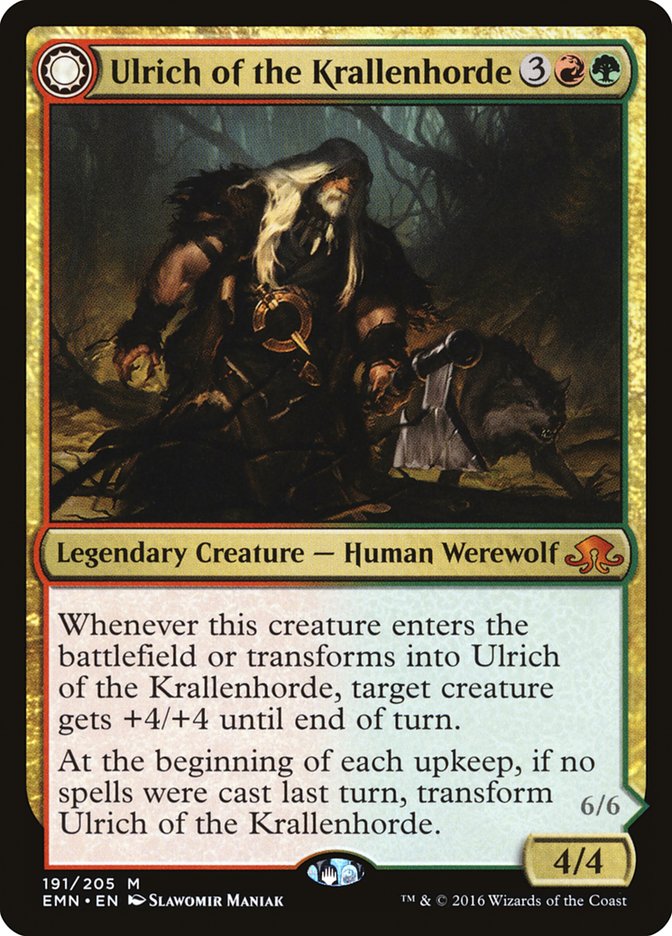It’s that time of year once again! Red review time!
This has been a slightly dark time for red as a color. Yes, there are a great many red cards that are seeing play in the newest sets. However, I’ve long been a fan of those base-red decks that either don’t play that second (or third) color or only very barely do. Geeba. Sligh. Dead Guy Red. Sped Red. Ponza. Red Deck Wins. Big Red. Rabble Red. Boss Sligh. Any of them.
There are many different ways to build a red deck, but we haven’t really seen the decks that are abundantly all about the red mana. The last time we may have seen one do reasonably well was this deck:
Creatures (26)
- 3 Pia and Kiran Nalaar
- 4 Hangarback Walker
- 4 Thopter Engineer
- 4 Vile Aggregate
- 4 Reality Smasher
- 3 Thought-Knot Seer
- 4 Hedron Crawler
Planeswalkers (4)
Lands (25)
Spells (5)

Kent Ketter’s deck definitely got a lot of notice just as the then-new Standard was taking off. His deck could arguably be the deck that was the most spoken of in that moment. In my opinion, this was in large part because of people’s unfed hunger for red.
The last time I did my red review, we were still in that place where red felt like it was struggling to get its own identity. One of the cards I noted as a “Card to Watch” was Westvale Abbey, which I could imagine having a home in an Eldrazi Red-style list like Kent Ketter was playing. It can be hard when you’re a red mage and the only thing you can get to sate you is faded-red (or pink or whatever you want to call “red-colorless”); unfortunately, red mages, while things do get better with Eldritch Moon, this set doesn’t create a revolution that brings back the moment of The Red Deck.
Enough of the preamble already – let’s do this!
The Cards to Watch
Normally only one card fits in this category. These aren’t cards that will necessarily change the world, but they perhaps might. That potential is all about what this category explores. In this case, it is one card, in a way…
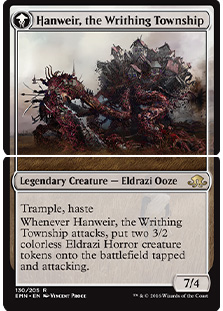
Okay, that might be cheating. In actuality, both of the pre-merged pieces of [card name="Hanweir, the Writhing Township"]Hanweir, the Writhing Township[/card] seem like they could be a huge part of a Standard red deck moving forward.
Individually, each of these cards is nothing short of excellent. Hanweir Garrison is just a wildly dangerous card, large enough to take effort to kill, but coming with a payoff that often means that even losing it in combat is still a winning proposition. This card isn’t Goblin Rabblemaster in terms of ending the games by itself, but it certainly can get there quite rapidly if left untouched. This card will see play for the entirety of its time as a legal Standard card.
Hanweir Battlements is a funny card. Looking at just the first two abilities, you’d have a card that would merit strong consideration as an important card. Just with those, you’d have a card that ups the power level of every creature in a deck that doesn’t already have haste. However, you don’t just have those two abilities; you have the third ability, which, while reliant on Hanweir Garrison, has a payoff that is more than noteworthy.
A 7/4 trample, haste monstrosity, Hanweir, the Writhing Township is a nightmare for the opponent. Perhaps unsurprisingly, you receive thirteen power from the melded Eldrazi Ooze. It effectively takes six mana to transform the Hanweir Garrison into this melded card, which makes for a total of nine mana spent.
That may sound like a lot, but when you take into account that each of these cards is powerful enough on its own, it really isn’t. At five mana, for example, you could drop a fresh Hanweir Garrison, give it haste, and present a real problem: four power might already be on the table, and thirteen more is only a single land away…
Merge has made this “Cards to Watch” category a little strange, but that seems unsurprising in a land of cosmic horror.
The Excellent
As in the last Red Review, only a single card warranted the excellent rating. Bedlam Reveler is just fantastic. While you won’t be casting this card at an absurdly early point in the game, there will still be games where you’ll see this Devil Horror in play on turn four being cast for a middling five mana. I also expect to see plenty of games where it is late and you are spending RR for a 3/4 prowess with Ancestral Recall tacked on. That’s pretty absurd.
The Good
This is just a powerful spell all around. At three mana, I usually expect to see this card dealing four damage to a creature, with the occasional doming of an opponent second-most often, but every mode is reasonable, and with escalate, truly awesome things can happen.
A lot of the really great red spells right now are best against creatures or best against players, but not both. Being able to affect both is huge, but also being able to ditch your hand of a clog-up of the wrong kind of card is great. Just casting a Winds of Change wouldn’t be great, but killing a creature or hitting the opponent on the head while you cast a personal Winds of Change is worth taking note of.
In one way, this card is going to be fighting with Fiery Impulse as a choice for the efficient, cheap red removal spell du jour. Importantly, though, you can run both. In some matchups, all you want is another cheap removal spell, and having an endless count of them is all it takes to win. Galvanic Bombardment’s scaling is a nice bonus and bumps this card up a huge notch.
Beggars can’t be choosers. We don’t get Incinerate levels of direct damage any longer. With all of its drawbacks, Volcanic Hammer didn’t just see play, but saw a lot of play. I expect this will be a mainstay.
It is impossible to imagine this Dragon not being best friends with Thunderbreak Regent. While there is a very marginal risk that playing this card will set you up for doom when they pump their entire team by pumping your Mirrorwing Dragon, the reality is that I expect to see Mirrorwing Dragon only dying when an opponent is willing to lose their whole team to kill it. While I’d love to see another bit of power on Mirrorwing Dragon, this is still a very good card.
Stromkirk Occultist might not have made it were it not for the ways in which this card is “Innistrad-ian”. Its status as a Vampire and it having madness are both critical for this card to be bumped up to the next level of consideration. It would be very solid without those two traits, but with them, it is easy to imagine the card in the context of the discard outlets that numerous other cards provide, and in that context building up the power of those cards. Any semi-card drawing elements in cards are worth paying attention to, but with all of the rest of the stats of this card, it is a very solid one.
The Sideboard Cards
While Nahiri’s Wrath isn’t the most card-efficient way to get rid of planeswalkers, it is a very solid way to get rid of several planeswalkers. Tossing two cards to get rid of a single planeswalker might be unpleasant, but sometimes it is a necessity. Tossing several more cards to get rid of several more planeswalkers starts sounding like not so bad a deal. Red’s primary way of deals with these cards has generally simply been “damage,” and if you’ve ever tried to burn out a Nahiri in Modern, you know that this can be rough going. More tools for this fight are certainly welcomed.
Personally, I find myself imagining this card as a nice anti-token card, especially in a deck that is planning on having a creature presence of its own. In this regard, spending only three mana to kill all of the opposing 1/1 tokens as an instant is pretty great, and the extra escalation bonuses can be a reasonable add-on.
The Role-Players
To me, this card requires either a dedicated Vampire deck to make work, or at least a dedication to madness or graveyard-filling. If those are things you’re in the market for, I really like the feel of Furyblade Vampire. Most likely, Furyblade Vampire will be surrounded by a pack of Vampires, if such a pack even exists. (Nest?)
This is simple: can you pull off Harmless Offering a Demonic Pact?
This is a strange kind of newfangled Ball Lightning. Six damage for four mana is still a lot of damage. If there is a Burn deck to be built in the new Standard, I imagine this card will be good in it. Importantly, a huge creature from the opponent is often the kind of thing that such a deck needs to overcome, and this card could also be a help in that, if you can swing it out there the turn the big critter hits.
The Marginal
Red is in need of the two-drop. This is not a great card, but sometimes you take what you can get simply because of the economics of it.
In a Pyromancer’s Goggles deck, there might be room for this if you really, really wanted to stretch it.
If you’ve gathered a big enough crew of Vampires that you’re getting value out of this, they’re probably dead, but perhaps not? Maybe there is a Call the Bloodline deck out there that wants this.
This is a reasonably enough-sized body that I can imagine it helping to hold the fort while you shoot down monster after monster.
If you’re in a Big Red deck, you might just prefer to go with something like Magnifying Glass, but there still is room here for a mana rock that you can take, pick up, and smash your opponent over the head with until they die.
The Unimportant
Most of these cards are simply wildly outclassed by other potential choices.
The Splashes
Outside of the context of Vampires, this card probably doesn’t have a home. But in that context, I can easily picture Bloodhall Priest being a reasonable, though not overwhelmingly powerful, part of a red-based Vampire deck splashing black.
Given all of the notable red-white lands, splashing into Ride Down can be a great way for an aggressive red-based deck to handle an imposing blocking deck. This may not be the world of Siege Rhino, but there are still reasons to value this spell.
For the red deck splashing into green, this is a sizable body that could easily take over the battlefield. To get real value out of it, you’d need to be creature-oriented enough to reliably have something in play to pump up. While I struggle to picture what that red deck splashing green would be (as opposed to an actual full-on R/G deck), if you have one, Ulrich is worth considering.
The Conclusion
Once again, I expect the general red mage to be a little disappointed by this set. While there are some truly incredible cards (I’m looking at you, Hanweir, the Writhing Township), there are only the barest handful of cards that are going to be helping make the backbone of a red deck, and not nearly enough to create a new Renaissance in red.
One huge issue in this department is that there were simply so many cards, proportionally, that were simply unimportant. Perhaps one-third of Shadows over Innistrad was in this camp, whereas slightly over half are in this set. This is particularly noteworthy because I generally am attempting to be at least fairly generous in an early analysis, open-minded to the potential that might emerge over time, as happened with a card like Burn Away, for example.
What red is really looking for, I think, in order to be ascendant like it once was, is some real strength in a tribal area, like we might be seeing in Vampires, a slightly stronger collection of cards to cast at one and two converted mana cost, or potentially more on the direct damage front for Burn.
I am confident that once I start drafting this set in the next days, I’m going to love Red for Draft, but, as with the last set, I’m disappointed in the options for a red aggressive strategy. Sadly, Eldritch Moon only gives those decks a little bit, and since I see so much more being given to other strategies, it doesn’t bode well for the red-centric among us.
Keep the flame burning, my friends. Perhaps Kaladesh will change our fortunes.


